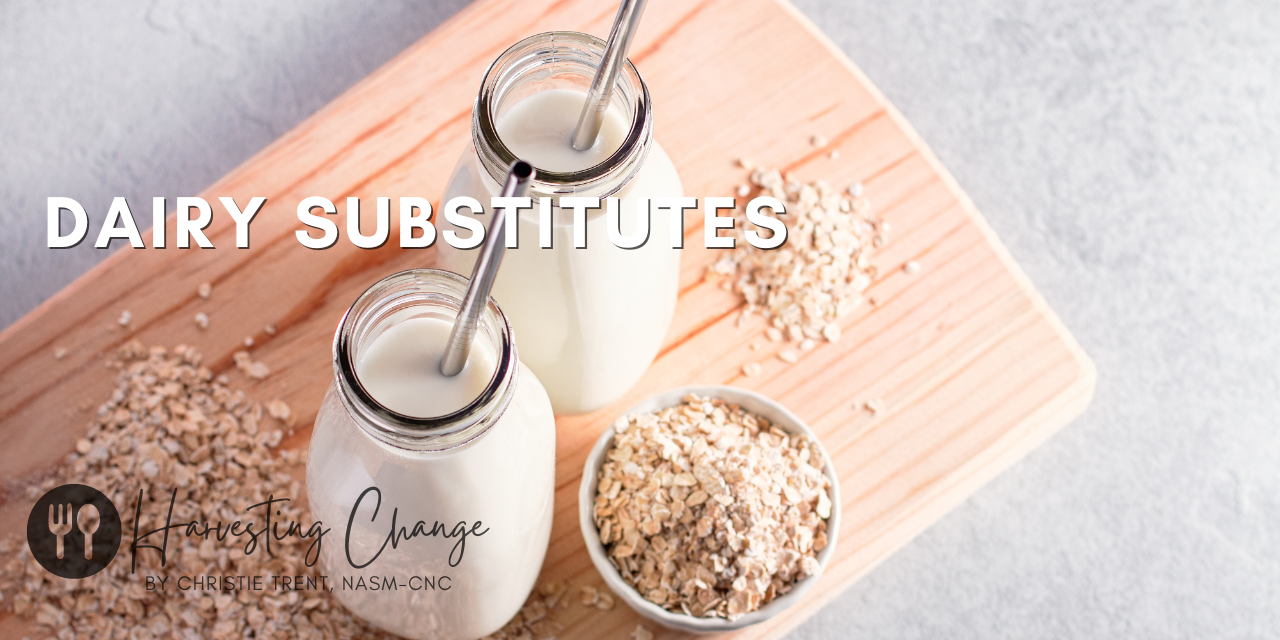
Switching from traditional dairy to plant-based alternatives has been quite the adventure. Along the way, I’ve discovered a variety of options, each with its own benefits and potential pitfalls. I will say this, removing dairy from my diet also eliminated my regular sinus and allergy issues that had plagued me my entire life. Even having small "cheats" would send my sinuses into a tailspin. Let me take you through my journey, highlighting what I've learned about each substitute, along with some tips for making them at home.
Almond Milk
When I first tried almond milk, I was drawn to its low-calorie content and the fact that many brands fortify it with essential
vitamins and minerals like calcium and vitamin D.
However, I quickly realized that almond milk has a much lower protein content compared to cow’s milk.
This made it less ideal for me as a primary protein source. While I don't prioritize excess protein in my daily diet, I do
need a certain amount to feel satiated. Many store-bought versions contain added sugars and preservatives, which I prefer to avoid.
Homemade Tip: Making almond milk at home is simple and rewarding. Soak raw almonds overnight,
blend them with water, and strain the mixture. If you have a juicer, you can even use it to make almond milk. Just add your
soaked almonds and water to the juicer, and voilà! (Check with your manufacturer to ensure this is possible and the best settings.)
Soy Milk
Soy milk became my go-to when I needed a protein boost. It’s almost as rich in protein as cow’s milk, with about 7 grams per cup.
I also appreciate that it's often fortified with calcium, vitamin D, and B12, which are crucial for overall health.
However, I had to be mindful of potential allergies and the ongoing debates about phytoestrogens in soy affecting hormone levels.
For me, the benefits outweighed the concerns as I do not subscribe to the philosophy that phytoestrogens are
more harmful than the estrogen found in cow's milk. But it's something to consider should you want to dive into that topic personally.
Homemade Tip: I have yet to make soy milk but it's on my radar to try in the future!
Oat Milk
Oat milk quickly became a favorite due to its creamy texture and naturally sweet taste. It’s perfect for my morning coffee and baking needs.
Oat milk is also rich in beta-glucans, which help lower cholesterol levels. One downside is its higher carbohydrate content, but since these are complex carbs,
they provide sustained energy throughout the day.
Homemade Tip: Blend oats with water and strain the mixture using a nut milk bag to make oat milk at home.
It's a straightforward process that ensures no added sugars or preservatives. You can do half and half with nuts, too!
Coconut Milk
Coconut milk's rich, creamy texture makes it an excellent substitute for heavy cream in recipes. However, its strong coconut flavor doesn’t work in all dishes,
and it's high in saturated fats, so I use it sparingly.
Homemade Tip: Blend coconut flakes with water and strain to make coconut milk.
Cashew Milk
Cashew milk's creamy texture and mild flavor make it a versatile option in my kitchen. Like almond milk, it’s low in protein, but it's also low in calories.
Cashews can be used to make cream cheese alterativates, cheese, and deserts.
Rice Milk
Rice milk is a great hypoallergenic option. It’s light and has a subtle flavor, but it's high in carbohydrates and
very low in protein, which may limit its use in your diet.
Health Warnings and Considerations
Through my journey, I’ve learned to watch out for added sugars in store-bought dairy substitutes. They can be hidden in otherwise healthy-seeming products,
so it’s important to check labels and opt for unsweetened versions. Additionally, while many dairy substitutes are fortified with essential nutrients,
they may not provide the same levels as cow’s milk. Depending on your diet, you might need to consider supplements to ensure you're meeting your nutritional needs.
Opt for Homemade
Making dairy substitutes at home has been a game-changer for me. It allows me to control the ingredients, avoid unwanted additives,
and customize the flavors to my liking. It’s also more cost-effective and ensures freshness. It's been a trial and error process for me,
and I'm sure it will be for you, too. But the rewards of finding the perfect dairy substitute are well worth the effort. I prefer a
thicker and creamier texture, so I opt for less water, but you may enjoy something lighter. Experiment and find what works best for you!